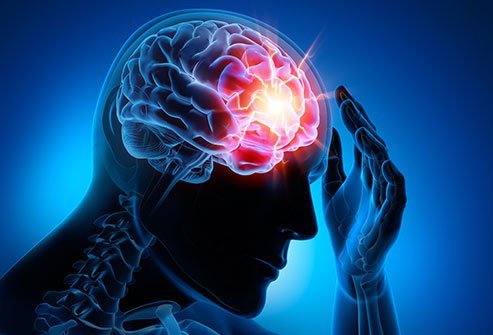CONCUSSION TREATMENT
A concussion is a minor traumatic brain injury produced by a knock to the head, a bump, or a sudden shock. Nevertheless, the consequences of a concussion can be severe. So, how can you tell if you or anyone else has had a concussion?
A concussion can also be induced by a powerful enough impact to your body that causes your head to jolt backwards, forwards, or to the side. The brain is pressed against the interior of the skull during a collision and might be bruised. Concussions strain and damage nerve fibers and capillaries, and they produce biochemical changes in your brain that induce a slight reduction of normal brain function. A solitary concussion typically does not result in persistent brain damage. Multiple concussions over the course of a lifetime may cause structural abnormalities in your brain.

BUT FIRST! LET’S CHECK OUT YOUR BRAIN ANATOMY.
The brain is an amazing three-pound organ that controls all functions of the body, interprets information from the outside world, and embodies the essence of the mind and soul. Intelligence, creativity, emotion, and memory are a few of the many things governed by the brain. Protected within the skull, the brain is composed of the cerebrum, cerebellum, and brainstem. The brain receives information through our five senses: sight, smell, touch, taste, and hearing – often many at one time. It assembles the messages in a way that has meaning for us, and can store that information in our memory. The brain regulates our perceptions, cognition, and communication, as well as the movement of our arms and legs and the operation of numerous organs in our body. The brain and spinal cord make up the central nervous system (CNS). The PNS is made up of spinal nerves that start branching from the spinal cord and cranial nerves that emerge from the brain. The cerebrum, cerebellum, and brainstem make up the brain.
The cerebrum is the biggest portion of the brain, consisting of right and left hemispheres. It carries out higher tasks such as interpreting touch, vision, and hearing, as well as communication, reasoning, emotions, learning, and fine motor control. The cerebellum is positioned underneath the cerebrum. Its role is to coordinate muscular actions, maintain posture, and maintain balance. The brainstem serves as a transmission site for the cerebrum and cerebellum to the spinal cord. Respiration, pulse rate, body temperature, waking and sleep periods, digestion, sneezing, coughing, vomiting, and swallowing are all autonomic activities where your spinal cord is responsible for. Each cerebral hemisphere is divided into five lobes depending on their function. These lobes are the frontal, parietal, occipital and temporal.
Your brain has rooms and spaces that has important role, these would be the ventricles. The ventricles are hollow fluid-filled chambers in the brain. The choroid plexus is a ribbon-like structure inside the ventricles that produces clear, colorless cerebrospinal fluid (CSF). CSF circulates throughout and around the brain and spinal cord to protect it from damage. Moreover it enters the subarachnoid space and soaks and cushions the brain. This flowing fluid is continually absorbing and replenishing itself. The amount of CSF that is absorbed and the amount that is generated are kept in balance. A disturbance or obstruction in the system can result in a buildup of CSF, which can induce ventricular enlargement (hydrocephalus) or a collection of fluid in the spinal cord (syringomyelia).
BLOOD SUPPLY OF YOUR BRAIN
Your brain is supplied by two paired arteries, the internal carotid arteries and the vertebral arteries. The majority of the cerebrum is supplied by the internal carotid arteries.
The cerebellum, brainstem, and underside of the cerebrum are all supplied by the vertebral arteries. The basilar artery is formed when the right and left vertebral arteries connect after passing through the skull. The basilar artery and the internal carotid arteries “connect” with each other at the Circle of Willis near the base of the brain. Communication between the internal carotid and vertebral-basilar systems is an important element of the brain’s safety. If one of the major arteries becomes stopped, collateral blood flow may be able to traverse the Circle of Willis and prevent brain injury. The brain’s venous circulation differs greatly from that of the rest of the body. Normally, arteries and veins flow together as they nourish and drain different parts of the body. So, one would expect the presence of a pair of vertebral veins and internal carotid veins. In the brain, however, this may not be the case. The primary vein collectors are incorporated into the dura to produce venous sinuses. The venous sinuses transport blood from the brain to the internal jugular veins. The cavernous sinuses empty the anterior skull base, whereas the superior and inferior sagittal sinuses supply the cerebrum. Eventually, all sinuses drain to the sigmoid sinuses which leave the skull and create the jugular veins. These two jugular veins are the only ones that discharge the brain.
BACK TO THE CONCUSSION; THE CAUSES
As previously mentioned concussions are due to a strong bump to your brain. It could be the result of falls, car accidents, assaults, and sports injuries. Sometimes it is due to vigorous shaking and other times due to a slight home accident like hitting your head with the door. Children, young people, and the elderly are more vulnerable to concussions and may require more time to recover. People who have previously experienced concussions are more prone to experience them again.
HOW IS YOUR BRAIN AFFECTED BY THE CONCUSSION
The frontal and temporal lobes are the most often damaged areas of the brain after traumatic brain injury. One of the reasons for this is that they are up against bone, which is quite stiff and tough. The other reason is that when the head rotates, since the neck is attached posteriorly to the skull—if you look closely at where the neck attaches—the front of the head travels farther than the remainder of the head. So, under certain conditions, the frontal and temporal lobes—as if appendages—move farther than the center of the sphere, if you will, of the remainder of the brain. The frontal and temporal lobes suffer more damage as a result of the torquing action. The frontal lobes have a major effect on personality, planning, initiating, and organizing—all of which are “high-level” cognitive functions and personality characteristics. The temporal lobes are largely engaged in memory and certain linguistic processes. As a result, if certain parts of the temporal lobes are damaged, memory functions such as verbal memory in the left hemisphere and nonverbal, visual memory in the right hemisphere can be negatively affected and even permanently injured if the damage is severe enough, while other areas of the brain can be moderately spared.

LETS CHECK IF YOU GOT A CONCUSSION AFTER THAT BUMP; THE SIGNS AND SYMPTOMS
Signs and symptoms usually appear quickly just after injury. Yet, you may be unaware of the severity of the damage at first, and certain symptoms may not appear for hours or days. For example, your kid or teen may be confused or puzzled in the initial few minutes, but an hour later, he or she may be unable to recall how he or she was injured.
After a bump to the head or body, children and teenagers claimed they “don’t feel right,” but others showed or reported one or more of the signs and symptoms mentioned below. Those turned out to have a concussion or more serious brain injury.
Some of the observed concussion signs were forgetting what happened before or after a hit or tumble, forgetting an instruction, uncertain about a task or position, or unfamiliar with the game, score, or opponent. Clumsy movements and slow respose to requests were noticed. In addition to changes in mood, conduct, or personality and lost of consciousness(even shortly).
Some of symptoms of a concussion reported were headache or “pressure” in the head, balance issues, dizziness, or double or fuzzy vision (vertigo symptoms), having a sluggish, foggy, or sleepy feeling, confusion, attention, or memory issues, Vomiting or nausea, slight light or noise bothers you or simply feeling depressed and not feeling right.
Even minor concussions should not be ignored. Although some concussions are less dangerous than others, neurosurgeons and other brain injury experts underline that there is no such thing as a mild concussion. In most situations, a single concussion should not result in long-term harm. A second concussion, especially one that occurs soon after the first, may not have to be very severe in order for its consequences to be irreversibly impairing. Other symptoms could be ringing in the ears, loss of some sense like smell and taste,troubles in falling asleep and blurry vission.
Approximately 80% of patients’ symptoms resolve within two weeks. Others, have symptoms that last for months or even years. Multiple concussions may raise the chance of developing more significant issues later in life, such as Alzheimer’s disease and chronic traumatic encephalopathy, or CTE, a neurodegenerative illness with dementia-like symptoms.
You should continue looking for indications of concussion immediately after the incident and for a few days afterwards. If your kid or adolescent’s concussion symptoms worsen, transport him or her to the emergency room immediately away.
HOW ARE YOU DIAGNOSED FOR A CONCUSSION?
Brain imaging investigations such as MRI and CT scans should not be used regularly to diagnose concussions. They generally do not reveal any major changes and subject people to unneeded radiation , in the case of CT scans. Although these tests are more effective for finding structural abnormalities, a concussion damage is biochemical and minute in nature, and it frequently appears on nerve imaging tests.
The doctor inquires on how the accident happened, where on the head it took place, and what symptoms are present. Any unexpected events should be reported to the your health care practitioner.
HOW WILL YOU BE TREATED?
Concussion symptoms can impact people’s eyesight, balance, and even mood. Historically, getting plenty of rest was the usual therapy for concussion. Newer techniques, on the other hand, include therapy to address particular symptoms. Clinics exist to assist in determining the most impaired system and the best treatment for a specific signs and symptoms. Furthermore, before returning to sports or activities that may involve contact or subsequent head damage, a complete medical assessment may be required.
If you or anyone you know is suffering from pain, call us today at (469) 545-9983.
